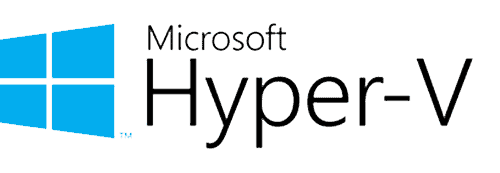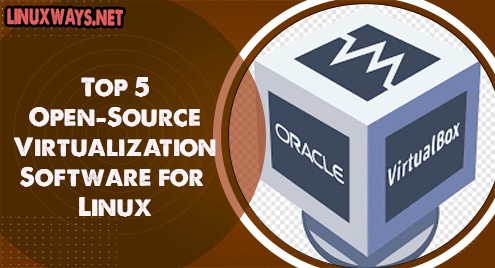Virtualization software enabling millions of users, systems, businesses around the globe has become a popular subject among computer and technology users. Of course, who would not like their computer system to do a bit more than they had expected it to? Virtualization does not offer a “bit” more, it rather extends the capabilities of a system drastically. The process duplicates the underlying system hardware enabling users to create multiple versions of operating systems, hardware platforms, storage devices, or computer network resources. In layman’s terms, it gives users access to multiple systems in a single computer system. Virtualization is most preferred and applied for cloud computing. However, different businesses adapt the technology to advance their business needs and requirements. Virtualization is also adopted by many for personal use, e.g., users can create virtual servers on their machine enabling them to install different operating systems, such as installing macOS or Linux on a Windows machine.
Having discussed the enormous capabilities of the virtualization technique, here in this article we provide an analysis and a summary of the best existing virtualization software specifically for Linux.
XENPROJECT

Founded and released by the Linux Foundation in 2003, the open-source virtualization software is the best performing virtualization platform for Linux. Xen is powered by the Xen hypervisor that is adapted for modified and unmodified guests on Linux and Windows platforms.
Some of the many advanced features and capabilities of the virtualization software include its support of various guest operating systems and cloud platforms, a seamlessly customizable and flexible architecture, i.e., it supports virtualization of x86 IA64, ARM. Other features include its enhanced provision of security features such as Linux kernel config/build system and virtual machine introspection. Xen is a renowned paravirtualization software around the globe. It ensures a safe, efficient, and reliable platform enabling and supporting the world’s largest clouds and enterprises such as Amazon Web Services, Public Cloud, Verizon Cloud, Aliyun, Rackspace, etc.
Get it now from https://www.citrix.com/downloads/citrix-hypervisor/
VirtualBox

Founded in 2007 by the IT industry giants, Oracle Corporation, VirtualBox is a powerful and robust x86 and AMD64/Intel64 virtualization software enabling offices, businesses, cloud computing platforms and even being adapted for personal use. VirtualBox is an open-source cross-platform compatible virtualization tool.
The enhanced virtualization software provides a list of features such as a seamless mode, shared folders and clipboards, special drivers and utilities enabling efficient switching between different systems, SMP support, teleportation, i.e., the Live Migration enabling switching between multiple physical machines without letting the user lose or break a connection, public API (Java, Python, SOAP, XPCOM) to control VM configuration and execution, etc. The advanced virtualization tool allows execution without hardware virtualization requirement, thereby eliminating the requirement of an Intel VT-X or AMD-V technology. From small enterprise systems to large cloud environments, the platform is the best fit for all.
Get it now from https://www.virtualbox.org/wiki/Downloads
Linux KVM

Developed by the Linux Kernel Community, KVM is a virtualization tool dedicated to x86 computers and Unix-like operating systems. The virtualization tool functions in an extraordinary fashion that transforms the Linux kernel into a hypervisor by utilizing its loadable kernel called KVM.ko. Thi unique behavior allows the VMs to gain direct access to the machine’s hardware.
KVM provides many features to its users, some of which include its support for the hotplug vCPUs, automatic NUMA (Non-Uniform Memory Access) balancing, teleportation i.e., Live Migration, dynamic memory management, limiting disk I/O requests from virtual to host machine, etc. Being a part of Linux, the virtualization tool provides its users access to all the new Linux features, fixes, and everything. Furthermore, KVM allows execution on numerous unmodified Linux or Windows Virtual machines where every virtual machine has private virtualized hardware: a network card, disk, graphics adapter.
Get it now from https://www.linux-kvm.org/page/Downloads
OVIRT

Developed by the oVirt Project, Red Hat experts, oVirt is a free and open-source Java-based virtualization software. The virtualization software is designed for the Linux operating systems and therefore is the best fit for any system supporting Linux regardless of its size. oVirt provides an easy and user-friendly web interface enabling centralized management of virtual machines, compute, storage, and networking resources. Currently, oVirt supports KVM on x86-64 and PowerPC64 architectures. However, the experts behind the phenomenal virtualization platforms are in a constant effort of developing support for the ARM architecture.
oVirt provides many features to its users such as advanced network management enabled via IP addresses, a configuration of bonded interfaces, gateways, and subnet masks. Other features include its high availability, teleportation i.e., live migration, live snapshots capability, cloning virtual machines from snapshots, advanced disaster recovery features. The self-hosted engine and Gluster-based storage domains allow seamless expansion of all resources owing to its centralized management architecture, thereby simplifying and optimizing different deployment scenarios. The advanced and extensive list of capabilities and features make the platform the first choice of many around the globe.
Get it now from https://www.ovirt.org/download/
Microsoft Hyper V

Released in 2008, the Hyper-V by Microsoft is an advanced virtualization tool enabling and supporting numerous systems and machines across the globe. Initially, the product was not released as an open-source project and did not support Linux. However, in 2019, Microsoft launched open-source Linux drivers for Hyper-V.
Hyper-V is a product of Microsoft, the virtualization software hosts numerous advanced features, such as shielded Virtual Machines improvements including Linux compatibility, Virtual Machine Encrypted Networks, nested virtualization, and cluster rolling, Dynamic Virtual Machine Multi-Queue, vSwitch Receive Segment Coalescing, Persistent Memory support, host CPU resource utilization monitoring, Enhanced session mode, etc. The reliability of Microsoft solutions is known to all, therefore the Hyper-V is the best fit for any software solution ranging in any size. Also, since 2008, Microsoft is continually adding more and more features taking the overall efficiency, performance, and reliability of the platform to the next level.
Install Hyper-V now from https://docs.microsoft.com/en-us/virtualization/hyper-v-on-windows/quick-start/enable-hyper-v
Closing Remarks
The articles discuss the top-performing virtualization software specifically for Linux. Some of the discussed virtualization paradigms are cross-platform such as XenProject, VirtualBox, and Microsoft Hyper-V, but Linux KVM and oVirt are specifically designed and created for the Linux operating systems. The extensibility and variety of features provided in each of the discussed virtualization software are commendable. The five listed software in the article have gained an image and popularity in quite less time since their initial releases and thereby are considered best by almost all the reviewers and users around the globe. Hence it can be safely concluded that any of the paradigm adapted to answer the virtualization demands of a system, will result in utmost customer satisfaction and website or solution’s reliability.




